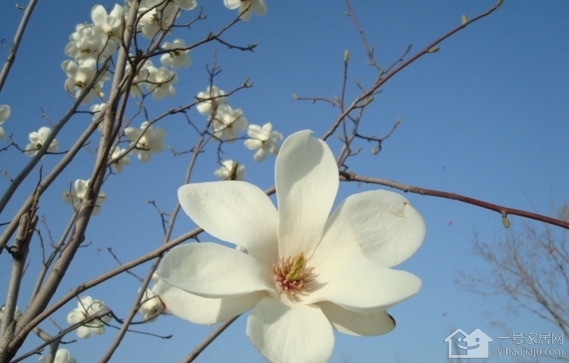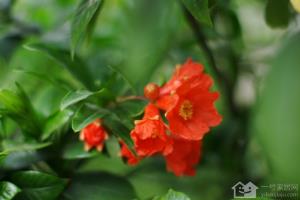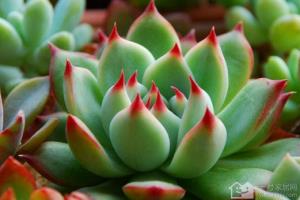How to breed magnolia with beauty and elegance
Magnolia is a very popular plant, beautiful and elegant. When planting magnolia, we should grasp the right time, neither too early nor too late. Today, the editor will give you a good introduction to the method of breeding magnolia, come and have a look!

Magnolia prefers fertilizer, but avoids big fertilizer; generally applying fertilizer twice during the growing period can be beneficial to flower bud differentiation and promote growth. Once in early spring, and again in May-June. Fertilizers are often made of fully mature organic manure. Newly planted seedlings do not need to be fertilized until after falling leaves or in the following spring. The root system of Magnolia is fleshy and can not tolerate stagnant water. It is advisable to keep the soil moist during the flowering and growing period. After entering the autumn, we should reduce watering, delay the rooting of magnolia, and promote the branches to mature in order to survive the winter. It is generally not watered in winter, but only once when the soil is too dry. Magnolia branch wound healing ability is poor, so generally do not prune. However, for the sake of reasonable tree shape, the overgrown branches, withered branches, disease and insect branches and branches that hinder the beauty of the tree shape should still be cut off at the initial stage of leaf expansion. In addition, after the flower fade, if there is no seed, the remnant flower and the ear of oyster should be cut off so as not to consume nutrients and affect the flowering in the coming year.
Magnolia is mostly planted in the ground, and it is appropriate to cultivate it into a pile when potted.
Magnolia can be propagated by grafting, striping, cutting, sowing and other methods, but the most commonly used are grafting and striping.
Magnolia prefers a sunny and humid environment and should not grow in alkaline soil for a long time. Planting should choose places with shelter from the wind and sun, good drainage and fertile places. There should be sufficient water and fertilizer before flowering to promote the fragrance of the flowers. Magnolia has few branches and generally does not need pruning except for withered branches, disease and insect branches and branches that disturb the tree shape. If there is no seed left after the flower fade, the fruit should be cut off so as not to consume nutrients. Magnolia has strong cold tolerance and can survive the winter in the open field in the south of North China and Northeast China.
Potted magnolia, feasible banding treatment, that is, after germination in April, with the growth of new shoots, banding at any time, tied into a curved posture, limiting the height of the trunk. And because Magnolia is a deep root system, living in the basin for a long time, it is easy to grow weak, so the main root should be repaired, planted in the field, and then put on the pot before flowering, so that the flowers can be numerous and colorful.
If you propagate with seeds, you must master the maturity of the seeds. When the seeds turn red and crack, they will be picked immediately. Early harvest will not sprout, and late harvest will be easy to fall off. The fruits with red outer seed coat were soaked and scrubbed in cold water, except for cleaning the seed coat, the seeds were taken out to dry and stored in stratified sand, and sowed in February to March of the following year. The height of one-year-old seedlings was about 30 cm. Those who cultivate large seedlings are transplanted in the next spring, properly cut off the main root, re-apply base fertilizer, and control the density, the qualified seedlings with complete crown, rare buds and plant height of more than 3 meters can be cultivated in 3 to 5 years. After 2-3 years of planting, it can enter the full flowering stage. This kind of seedling has strong growth potential and strong adaptability, and its effect is not inferior to that of grafted seedlings.
Cuttage is the main breeding method of Magnolia. The cuttage time has a great influence on the survival rate, which is generally carried out from May to June, and the biotechnological survival rate of young trees is the highest in the same year. Soaking the base with 50ppm naphthylacetic acid for 6 hours could increase the rooting rate.
Striping is a traditional breeding method, which is suitable for the preservation and development of famous and high-quality varieties. The time of striping is 2 ~ 3 months. After pressing, it took root in the same year, and the longer it was connected with the mother plant, the more developed the root system was and the higher the survival rate was. It can blossom in 2-3 years after planting.
In recent years, using the method of tissue culture, the buds of Magnolia were used as explants and cultured successfully in test tube. This method is of special significance in the preservation and development of new types bred by budding and hybridization.
The above is the introduction of magnolia culture methods brought by the editor. Do you know after reading the article? Hope to be able to explain to you, predict more related information, please follow the No. 1 home network.
Related
- Wuhan Hospital Iron Tree Blooming Result Was Instantly Frightened by the Gardener Master
- Which variety of camellia is the most fragrant and best? Which one do you like best?
- What is the small blue coat, the breeding methods and matters needing attention of the succulent plant
- Dormancy time and maintenance management of succulent plants during dormancy
- Minas succulent how to raise, Minas succulent plant pictures
- What are the varieties of winter succulent plants
- How to raise succulent plants in twelve rolls? let's take a look at some experience of breeding twelve rolls.
- Attention should be paid to water control for succulent plants during dormant period (winter and summer)
- Watering experience of twelve rolls of succulent plants
- Techniques for fertilizing succulent plants. An article will let you know how to fertilize succulent plants.



